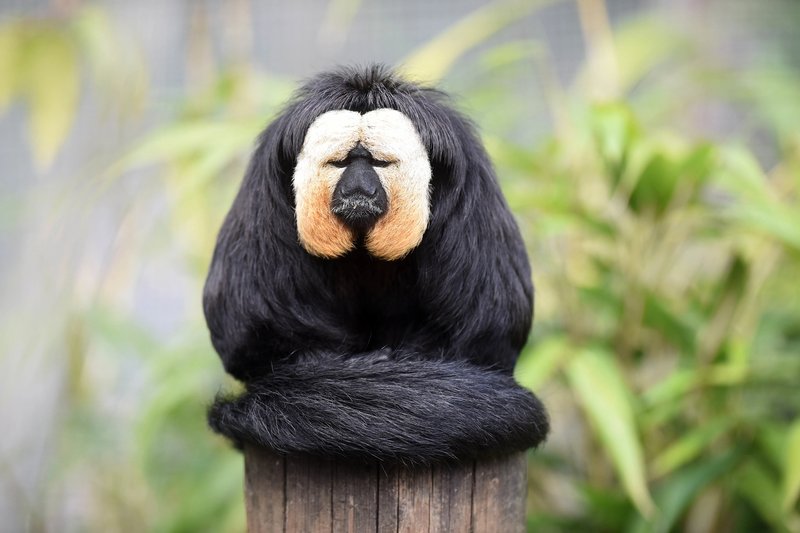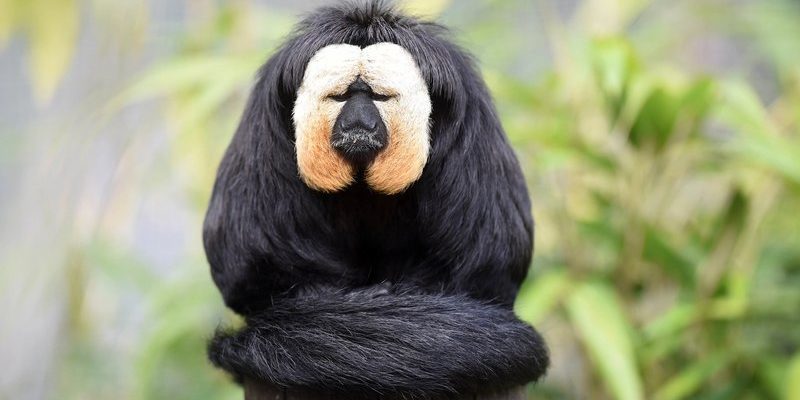
Saki monkeys are part of the Pitheciidae family and can be found in countries like Brazil, Guyana, and Suriname. If you’re wondering why they’re so captivating, you’re in for a treat! These creatures are not just another cute face in the primate world; they play an important role in their ecosystems and have some really interesting habits worth exploring. So grab your coffee and let’s get into it!
1. Unique Appearance
Saki monkeys have a striking appearance that sets them apart from many primates. Their most distinctive feature is their fur, which can vary from light golden to deep black, often covering their entire body except for their faces. This thick, shaggy coat isn’t just for show; it helps them adapt to their forest environments by blending in with the trees and leaves.
Here’s the thing—while they might look kind of funny, their appearance serves a purpose. For instance, their long hair might help keep them warm in cooler areas of the rainforest. Plus, those expressive faces can convey emotions just like ours. Saki monkeys often communicate through facial expressions, which adds another layer to their social interactions within their groups.
2. Social Creatures
Saki monkeys are what we call *social creatures*, often found in small family groups that showcase a range of social behaviors. These groups usually consist of one or two adult males, several females, and their offspring. Imagine your family hanging out together, sharing meals, and keeping an eye on each other—that’s pretty much a day in the life of a saki monkey.
Interestingly, their social structure is quite complex. Adult males engage in playful sparring, which helps establish dominance and maintain harmony within the group. You might be wondering why this matters—well, it’s essential for the stability of their social environment. The better they interact, the more cooperative they’ll be when foraging for food or protecting themselves from predators.
3. Diet and Foraging Habits
When it comes to food, saki monkeys are primarily frugivorous, meaning they primarily eat fruits. However, they also munch on leaves, seeds, and flowers, making them omnivores in practice. Their diet can change depending on the season and what’s available, showcasing their adaptability.
Saki monkeys are known to be *expert foragers*, using their sharp teeth to crack open hard seeds and nuts. In a way, they’re like little foraging specialists in the rainforest. With their keen sense of smell and sight, they can find food that other animals might miss. This skill is crucial for survival, especially in an environment where food sources can be scarce at times.
4. Vocalizations and Communication
Vocal communication among saki monkeys is quite fascinating. They have a variety of calls that convey different messages—from alerting others of potential danger to discussing food sources. Their calls often sound like a mix of barks and whistles, which might remind you of a musical jam session in the treetops.
Here’s the thing: vocalizations are essential for maintaining group cohesion. If they spot a predator, like an eagle or a jaguar, their alarm call can alert the rest of the group to take cover. It’s a bit like your friend shouting, “Duck!” when a frisbee is flying your way!
5. Habitat and Range
Saki monkeys are native to the tropical regions of South America. They thrive in a variety of habitats, including rainforests, savannas, and even some gallery forests near rivers. This wide range of habitats shows their adaptability and resilience against environmental changes.
However, their habitat is increasingly threatened by deforestation and human encroachment. As we continue to push deeper into their territories, saki monkeys face challenges in finding food and safe places to live. It’s a tough reality, but understanding their habitat can help us work towards conservation efforts.
6. Reproduction and Parenting
When it comes to their love lives, saki monkeys have some intriguing behaviors. Breeding season varies by region, but generally, females are the ones who play a significant role in choosing their mates. After mating, the female carries her young for about five months before giving birth.
Once the baby arrives, the entire group pitches in to help care for it. This cooperative parenting means that the baby gets a lot of love and attention from multiple adult saki monkeys. Imagine a little one being passed around like a prized possession—that’s how they care for their young!
7. Conservation Status
As charming as they are, saki monkeys are facing threats that put their future in jeopardy. Many species, including the brown saki and the black saki, are classified as vulnerable or endangered due to habitat loss and hunting. The good news is that awareness is growing, and conservationists are working hard to protect these unique creatures and their habitats.
You might wonder how you can help. Supporting organizations that focus on rainforest conservation or raising awareness about these fascinating creatures can make a real difference. Every action counts when it comes to protecting wildlife!
8. Interesting Social Behaviors
Saki monkeys are known for their playful demeanor, which is often reflected in their social interactions. When they’re not foraging or keeping an eye out for predators, they engage in social grooming sessions. This behavior isn’t just about keeping clean; it strengthens bonds among group members, creating a supportive community.
In addition to grooming, saki monkeys also play a lot. You might say they have a playful spirit, swinging from branch to branch and chasing one another around the treetops. This playfulness is not only fun but also important for developing skills they need for survival.
9. Intelligence and Problem-Solving Skills
Saki monkeys are quite intelligent and have demonstrated impressive problem-solving skills. They often face challenges in the wild that require them to think critically, especially when it comes to finding food. For example, they’ll cleverly use tools, like sticks, to extract insects or reach fruit.
This intelligence isn’t just about survival; it also enriches their social lives. They learn from each other, whether it’s discovering a new food source or navigating their environment. It’s like a little school in the treetops where each saki monkey brings something unique to the table.
10. Saki Monkeys in Popular Culture
Lastly, let’s talk about how saki monkeys have made their way into popular culture. While they might not be as famous as some other primates, they still pop up in documentaries and wildlife shows. Their unique looks and behaviors make them fascinating subjects for filmmakers and animal lovers alike.
You might see them featured in educational programs that highlight rainforest biodiversity. By understanding and appreciating saki monkeys, we can inspire others to care about wildlife conservation and the importance of protecting their habitats.
In conclusion, saki monkeys are not just another cute face in the animal kingdom. With their unique appearance, complex social structures, and fascinating behaviors, they offer us a window into the wonders of the natural world. As we learn more about these incredible creatures, it becomes increasingly important to focus on their conservation and protection. So let’s keep the conversation going—saki monkeys deserve our attention and care!

